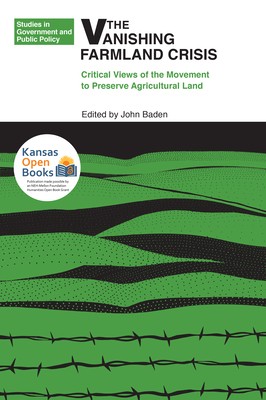
- We will send in 10–14 business days.
- Publisher: University Press Of Kansas
- ISBN-10: 0700631380
- ISBN-13: 9780700631384
- Format: 15.2 x 22.9 x 1 cm, softcover
- Language: English
- SAVE -10% with code: EXTRA
The Vanishing Farmland Crisis (e-book) (used book) | bookbook.eu
Reviews
Description
The 1979 publication Where Have All the Farmlands Gone? by the National Agricultural Lands Study painted a bleak future for American farmlands. Threatened by encroaching construction and soil erosion, these lands were seen as endangered--and as the direct prelude to a nation-wide shortage of both food and fiber. The NALS report, to which eleven federal agencies contributed, argued that land-use planning and control must be employed to protect valuable farmland from "urban sprawl."
First published in 1984, this collection of essays by a distinguished group of economists, including Theodore W. Schultz, Julian L. Simon, and Pierre Crosson, takes issue with the belief that croplands need governmental protection. Rather, the collection as a whole supports two theses: 1) shrinking farm acreage is not a serious problem, and 2) individual choices by landowners in a free market setting result in better-organized land use than would governmental land-use planning and regulation.EXTRA 10 % discount with code: EXTRA
The promotion ends in 8d.10:43:58
The discount code is valid when purchasing from 10 €. Discounts do not stack.
- Publisher: University Press Of Kansas
- ISBN-10: 0700631380
- ISBN-13: 9780700631384
- Format: 15.2 x 22.9 x 1 cm, softcover
- Language: English English
The 1979 publication Where Have All the Farmlands Gone? by the National Agricultural Lands Study painted a bleak future for American farmlands. Threatened by encroaching construction and soil erosion, these lands were seen as endangered--and as the direct prelude to a nation-wide shortage of both food and fiber. The NALS report, to which eleven federal agencies contributed, argued that land-use planning and control must be employed to protect valuable farmland from "urban sprawl."
First published in 1984, this collection of essays by a distinguished group of economists, including Theodore W. Schultz, Julian L. Simon, and Pierre Crosson, takes issue with the belief that croplands need governmental protection. Rather, the collection as a whole supports two theses: 1) shrinking farm acreage is not a serious problem, and 2) individual choices by landowners in a free market setting result in better-organized land use than would governmental land-use planning and regulation.

Reviews